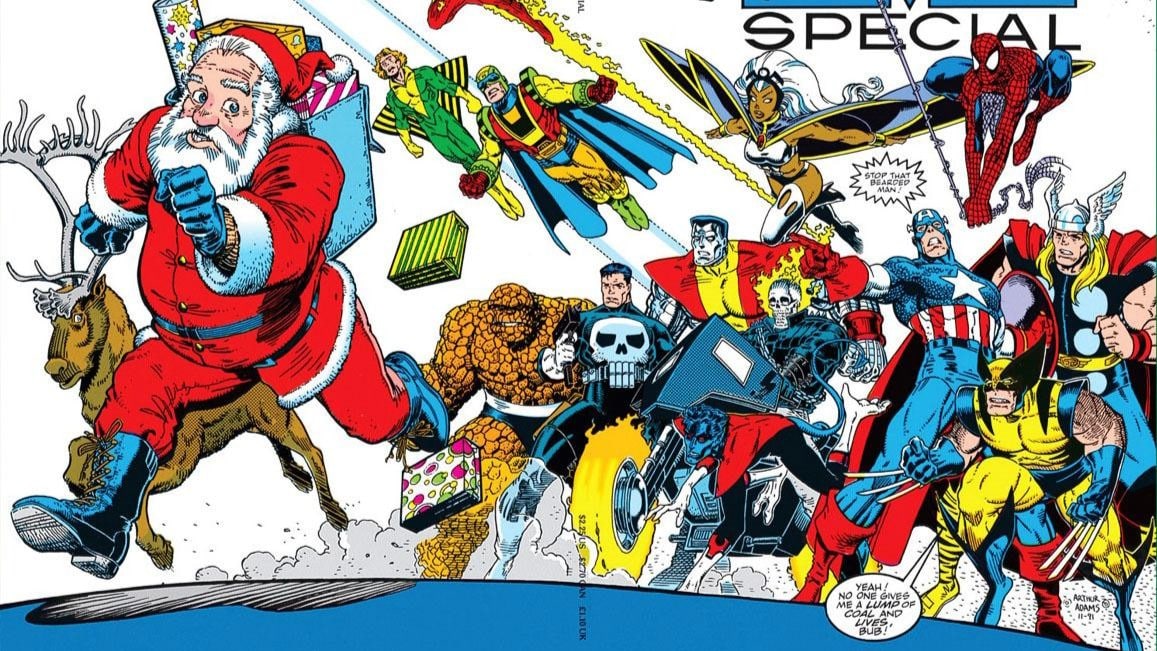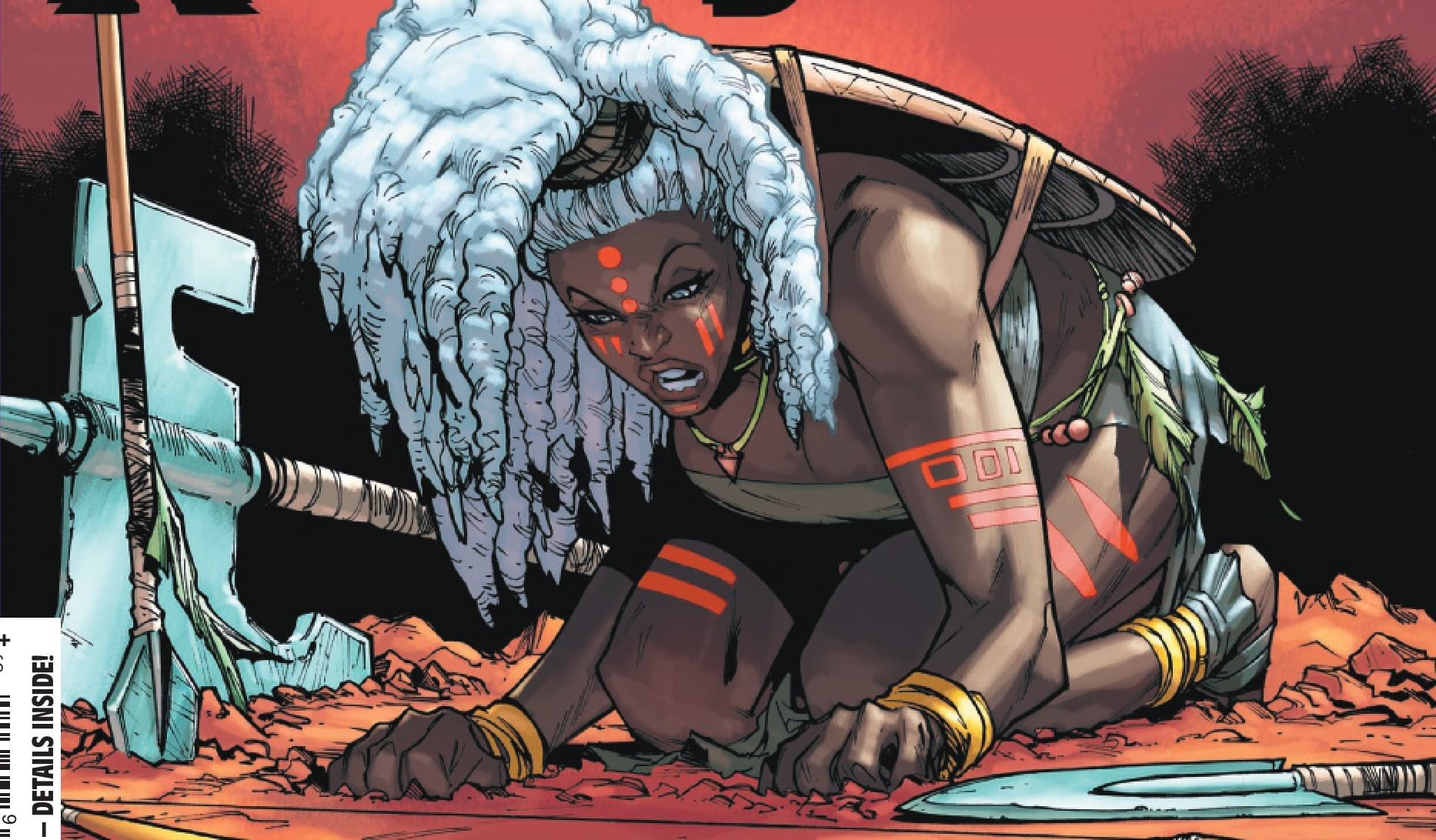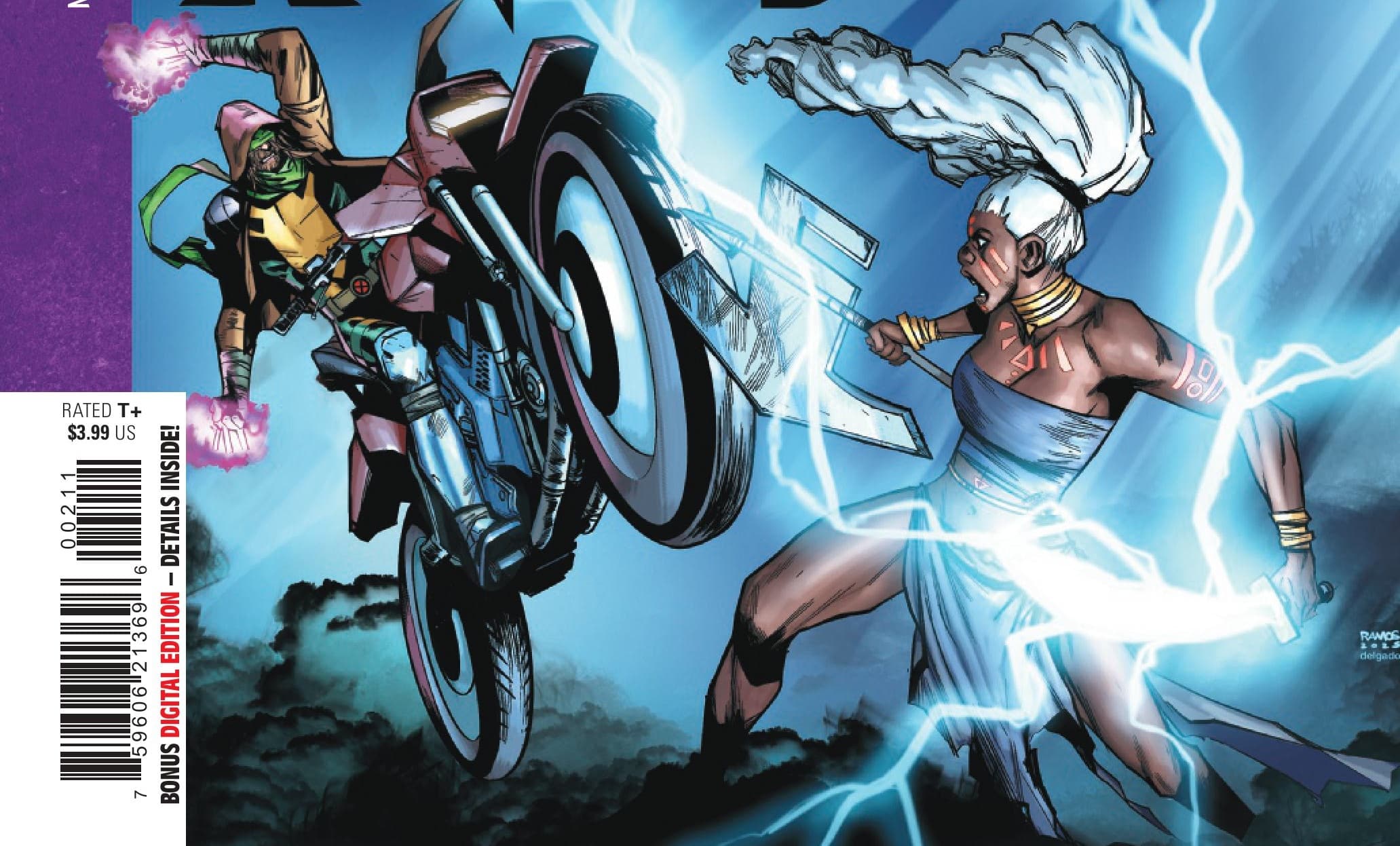Who can take some genes and make a dodgy clone? Who can trap a mutant when he’s all alone? Who can throw a comic off its slice-of-life tone? Mr. Sinister can, and does, in Exceptional X-Men #9, written by Eve Ewing, drawn by Carmen Carnero, colored by Nolan Woodard and lettered by Travis Lanham.
Now that my favorite X-comic of this era has almost approached Two Trade Paperback status (please let it continue!); now that we’re halfway through the first story arc with an actual supervillain (the biotech venture capital guy Sheldon Xenos, who turned out to be Mr. Sinister); now that we’ve come to know all the new teen players, the students (cautious Axo, intense Melee, vulnerable Bronze) along with the familiar mutant teachers (it’s a Kitty Pryde comic, as I hope it always will be); now that we’ve come to this height of cape comics storytelling, it’s time to look back and think about decompression.
Decompressed comics take longer to tell the same story than an older mainstream comic would. They move more slowly, like an indie film as compared to an action blockbuster. They may give artists more room and bigger panels, making the artist’s talents more obvious and/or making deadlines easier to meet (fewer panels per issue). Sometimes that style means fewer words per issue. Decompressed comics may, instead, give writers more time for dialogue that fleshes out the characters or amuses the readers or focuses on cool details, rather than advancing the plot. Decompression in American-style superhero comics probably began in the early 2000s, maybe because superstar artists wanted more space (and less work per issue), maybe because creators had read more manga.
Decompressed comics can create things of beauty; they offer characters room to grow and change and breathe, without having to throw a punch, or stage a wedding, every five pages. Dialogue-heavy writers (like Brian Michael Bendis) and intricate plotters who rely on hints (like Kieron Gillen) both find that decompressed comics play to their strengths. Decompressed comics make it easier for a monthly title such as Exceptional X-Men to do what the Claremont-era teams often wanted comics to do anyway. Comics with that pace, given enough dialogue, can focus on talking and listening, on how heroes and people around them feel and change, and on how it feels to grow up — or feel not-yet-grown-up — with mentors and teachers, students and kids, fragile and lifegiving bonds among generations, forged through found families and horizontal identities.
That’s what I want from Exceptional. Mostly that’s what Ewing, Carnero and company have provided, and at the moment I’d like to see Ewing and Carnero provide it for as many issues as, oh, Action Comics has had. So far we’ve spent pages on Axo’s home life, his parents, his sister, his changing skin color, and half an issue on whether Kitty can ask a girl out (yes). The big villain fights will come, but we have to wait for them. When they do come, they can happen so fast that the comic in hand feels too short, like an intricate, dazzling film you saw in a movie theater that lasted only an hour. We might say, at once, “that’s great!” and “that’s all?” As well as “what’s next?”
And that’s what I said to myself after zipping my way through this wonderful, all too short issue, which gives us Kitty’s not-quite-jaded realization that Sheldon Xenos, or S. X., stands for Essex, which means Mr. Sinister. Kitty’s upset at herself because she didn’t spot the pun any sooner. I’m upset at myself for the same reason, though with approximately one one-millionth of the in-universe stakes.
And then it’s time to find Xenos on the internet. “Hacker Kitty?” asks Melee; “Katherine has led many lives, sweetheart,” Emma replies, amazed at what today’s teens might not know. Carnero’s picture of Kitty sitting cross-legged, focused on her laptop, shows our girl completely in her element. I think it’s a callback to the greatest comic pinup of all time. YMMV.
After which it’s time for Kitty and Emma and Bobby to do, to Melee and Bronze, exactly what the grown-up X-Men constantly did to the O.G. New Mutants, with Kitty at the O.G.s’ side: “Let’s go get our kid back,” Kitty says. “You stay here. Mister Sinister is dangerous far beyond anything you’re ready for.” Look at her face in those panels. See how much she hates telling the kids to stay behind. See how she resolves to do it anyway.

I’m not gonna spoil the only other surprise-slash-reveal in the issue, but I will say that if you pay close attention to Woodard’s coloring you’ll spot it before the kids do. And then I’ll say that the more you know about Kitty and Emma and their whole backstories, separate and together — remember, Emma’s the one who lost a whole team of her teenage students! With the X-Men present! — the more you see how much the issue, the combat and the last three pages make up a redemption arc brighter and stronger than anything you’ll find in St. Louis. Kitty really does seem forever fated (as she complained in Exceptional #2) to live out each day as a student or as a teacher or as “baby mutant rescue lady.” At least she doesn’t have to do it alone. Again, look at Kitty’s face, and then at Emma’s. See how the facial expressions change. See how Ewing’s script gives Carnero and Woodard room to show them change. That’s what decompressed comics can do. That’s why I prefer them.
But I still want to know what happens next.
Points of Pryde
- Till now we’ve seen Kitty only in civilian outfits — dancewear plus blue hoodie whenever she’s training the team — which means this issue appears to bring the soft launch of her new, and awesome, blue-on-blue costume, blending the color scheme of her Excalibur Shadowcat togs with the clean lines from all those yellow-and-black training uniforms. I want Carnero and Woodard to draw meeeeee.
- There’s something almost uniquely unsatisfying in seeing our heroes punch out, incapacitate or otherwise physically defeat Mr. Sinister, because we know he’s got a clone at home. He’s like the literal in-universe incarnation of the semi-truth that no one stays dead in cape comics.
- Bobby — who has a college degree in accounting — reveals his especially strong feelings regarding the structure of U.S. student loans.
- When Eve Ewing isn’t writing the best X-book at least since the fall of Krakoa, she writes and teaches about education and race and racism and the history of schools. So when Melee yells, at baffled bystanders, “Support public schools!” Ewing’s not kidding (but the scene’s still pretty funny).
- Nor, perhaps, are Melee and Bronze wholly joking when they imply that our current regime of Advanced Placement testing, run by a somewhat Sinister College Board, turns high school students into gross piles of goo.
Buy Exceptional X-Men #9 here. (Disclaimer: As an Amazon Associate, ComicsXF may earn from qualifying purchases.)
Stephanie Burt is Professor of English at Harvard. Her podcast about superhero role playing games is Team-Up Moves, with Fiona Hopkins; her latest book of poems is We Are Mermaids. Her nose still hurts from that thing with the gate.






